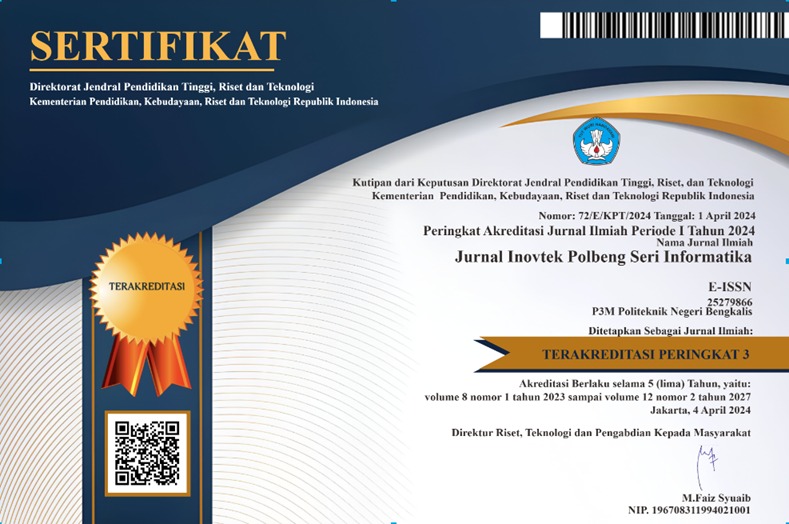Classification of Skin Diseases Using YOLOv11
DOI:
https://doi.org/10.35314/9zv65764Keywords:
YOLOv11, Skin Disease, Artificial IntellingenceAbstract
The skin, as the largest organ in the human body, is susceptible to various diseases that can be transmitted through direct contact or environmental exposure. Early detection of conditions such as cancer is crucial for effective treatment. This study implements the YOLOv11 algorithm to classify four types of skin diseases: Actinic Keratosis, Basal Cell Carcinoma, Melanocytic Nevus, and Melanoma. Using a Kaggle dataset of 2,000 images (500 per class), the images were processed by resizing them to 640×640 pixels and applying augmentation techniques (flipping, rotation, lighting adjustments) to enhance model robustness. The data was split into training (85%), validation (10%), and testing (5%). Model training on Google Colab (T4 GPU, 100 epochs) achieved an overall accuracy of 79%. Evaluation metrics showed strong results for Actinic Keratosis (precision=0.92, recall=0.92, F1=0.92) but lower performance for Melanoma (recall=0.59), likely due to class imbalance. Aggregate metrics indicated precision=0.80, recall=0.73, and F1=0.76, demonstrating reliable detection despite uneven performance across disease types. The main limitations include: a limited dataset size affecting model generalization; variability in image quality and lighting; and bias toward certain classes.
Downloads
Downloads
Published
Issue
Section
License
Copyright (c) 2025 INOVTEK Polbeng - Seri Informatika

This work is licensed under a Creative Commons Attribution-NonCommercial-ShareAlike 4.0 International License.














